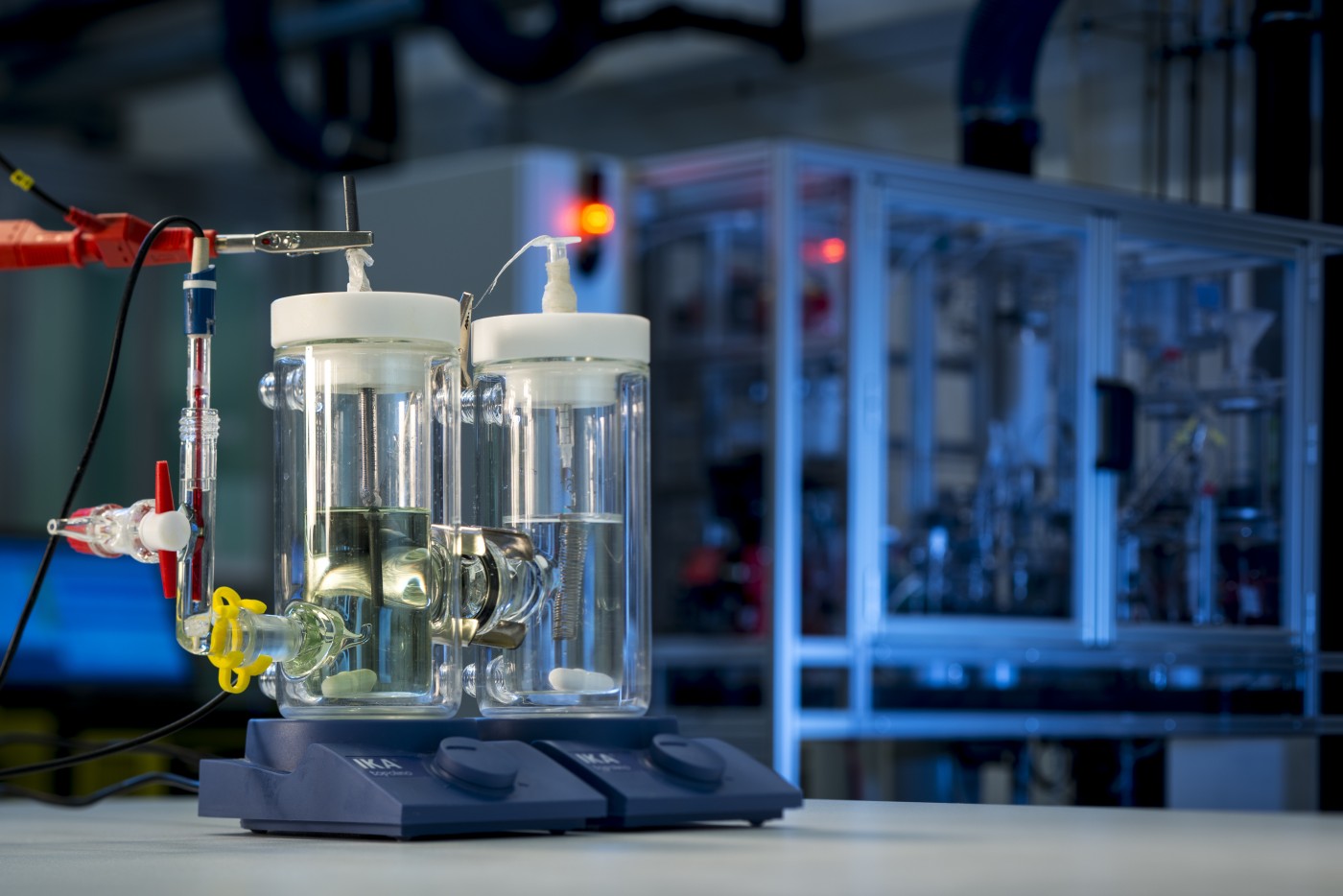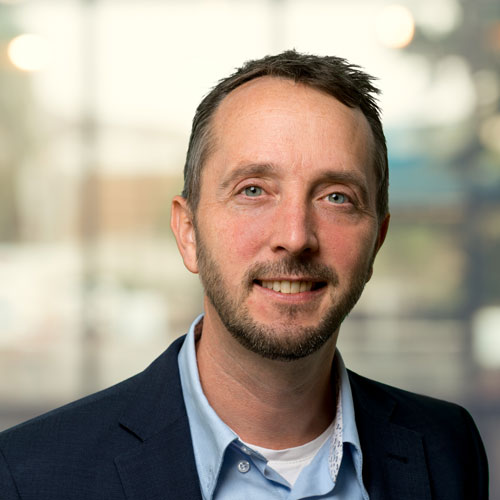

VoltaChem on path towards full carbon circularity by 2050
22-12-2022
 The aim is clear: to meet our climate targets, we need to reduce our carbon emissions to zero by 2050. However, companies in the chemical, energy and processing industries are still largely dependent on the fossil feedstocks that cause these emissions. VoltaChem is working with industrial partners on solutions to eliminate fossil feedstocks and close the carbon cycle. Within this cycle, CO2 will no longer be a source of harmful emissions, but a source for making new products.
The aim is clear: to meet our climate targets, we need to reduce our carbon emissions to zero by 2050. However, companies in the chemical, energy and processing industries are still largely dependent on the fossil feedstocks that cause these emissions. VoltaChem is working with industrial partners on solutions to eliminate fossil feedstocks and close the carbon cycle. Within this cycle, CO2 will no longer be a source of harmful emissions, but a source for making new products.
Radical change
‘This does, however, mean making a radical change and building completely new industries,’ says VoltaChem business manager Martijn de Graaff. ‘We are working with leading companies in the relevant sectors on various pathways towards a sustainable future involving new business models. New technologies are indispensable, but businesses also need to see that there is a prospect of a profitable future.’
Successful transformation
There are many challenges to overcome, but VoltaChem is convinced it can play a crucial role in successfully transforming the chemical industry. Today, this transformation is still entirely dependent on carbon, global demand for which to produce chemicals and derivatives will more than double by 2050. At present, as much as 85% of the carbon required is obtained from fossil sources. The current renewable share, amounting to 15%, needs to be increased to 100% within 30 years. That means using plastic waste, biomass and CO2 as feedstocks.
No time to lose
While demand for carbon in the energy sector is expected to fall by 50% by 2050 due to electrification, and by as much as 90% in the transport sector, in the chemical sector it is forecast to double. Most of this growth in demand will occur outside Europe. Energy and transport are relatively easy to decarbonise, but for the chemical sector the situation is more complex. In this sector carbon is a source of both energy and raw materials. Replacing fossil feedstocks with renewable sources is therefore a major challenge. VoltaChem, together with its community members, has mapped out several pathways to make this possible. As an alternative to fossil fuels, electrification can provide a solution. Hydrogen can then be used as a renewable fuel. Fossil raw materials can be replaced by recycled plastics, biomass and circular CO2. There is no time to lose to make this transition.
Positive business cases within ten years
Martijn de Graaff: ‘The chemical industry makes investment decisions on a long-term basis. Building a new factory costs lots of money and takes a great deal of time. The industry therefore needs certainty. But in this sector, much of the technology still needs to be developed to a level that is both technically and commercially attractive. Within 10 years, therefore, we should have a positive business case for carbon-neutral conversion that allows us to meet the 2050 targets. We are currently working on several pathways in parallel, together with VoltaChem community members and partners. In the future, all carbon-based products will have to be made via recycling, biomass and CO2 conversion. The latter pathway is particularly relevant to the VoltaChem community. A huge amount of energy is required for CCU and ultimately this will have to come from renewable sources, in other words via electrification based on green electricity and via green hydrogen.’
Turning CO2 into products
Alongside biomass conversion, for the longer term VoltaChem is therefore focusing heavily on technologies that allow captured CO2 to be converted into products that are currently based on fossil feedstocks. This conversion can be performed using electrochemical processes, integrated thermocatalysis and plasma technology. The CO2 is captured by industry and the energy sector or directly from the air (direct air capture, DAC). However, waste, residual gases and biomass are also sources of usable CO2, albeit biogenic rather than fossil CO2. The conversion process allows CO2 to be turned into materials such as plastics. VoltaChem community members are aiming to make such materials from biogenic CO2 and renewable energy in the future. By around 2040 the technology and market are expected to have reached a point where products based on circular carbon are more attractive than fossil-based ones for the first time on a large scale. The carbon cycle can then be closed by making products from industrial, biogenic or air-captured CO2.
New chemicals and molecules
‘To make those products, you will of course require energy, which will have to be obtained entirely from renewable sources. We are aiming to design processes that require a minimum amount of energy,’ says Martijn de Graaff. Together with community members, comprising a range of innovative international companies and knowledge institutions, VoltaChem is working on new platform chemicals and molecules using sustainably generated electricity. The three conversion technologies (electrochemistry, integrated thermocatalysis and plasma) can be used to produce ethylene or methanol from CO2, for example, which can then form the basis for new materials and products. Integrated thermocatalysis is now the most advanced of these technologies. In recent years it has evolved from TRL level 3 (proof of concept) to TRL5 (validated environment). It is expected to reach TRL9, or fully operational on a large scale, before 2040. Electrochemistry will reach that level a few years later, followed by plasma technology, which is currently still in its infancy. ‘In around 2030 equipment builders will be able to demonstrate their first products. By 2040 the first large-scale plants will have been built and by 2050 circular carbon will need to have supplanted fossil carbon,’ explains VoltaChem business manager Martijn de Graaff.
Join VoltaChem on this mission for groundbreaking innovation
The VoltaChem Community aims to bring together stakeholders from relevant sectors, like chemicals, energy, equipment industry and service providers in an exclusive forum. The goal of the community platform is to develop and maintain a multi-year high-level roadmap for implementation of electrification and decarbonization in the industry and society as a whole. And to work on specific high-level non-technical projects that are needed for implementation of the roadmap. All partners that participate in the various technology development programs in the potential of electrification are united. Together, the future of electrification, road mapping, and (inter)national agenda-setting are discussed. VoltaChem invites companies in the process industry, electricity sector, and equipment sector to join the VoltaChem's Community. For more information go to our community page.
Share this page:
